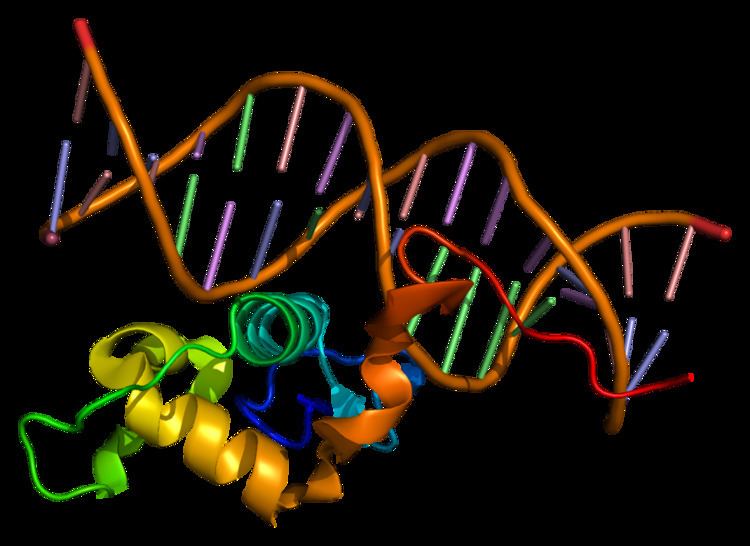Species Human Entrez 4929 | Human Mouse Ensembl ENSG00000153234 | |
 | ||
Aliases NR4A2, HZF-3, NOT, NURR1, RNR1, TINUR, nuclear receptor subfamily 4 group A member 2 External IDs OMIM: 601828 MGI: 1352456 HomoloGene: 4509 GeneCards: NR4A2 | ||
The Nuclear receptor related 1 protein (NURR1) also known as NR4A2 (nuclear receptor subfamily 4, group A, member 2) is a protein that in humans is encoded by the NR4A2 gene. NURR1 is a member of the nuclear receptor family of intracellular transcription factors.
Contents
NURR1 plays a key role in the maintenance of the dopaminergic system of the brain. Mutations in this gene have been associated with disorders related to dopaminergic dysfunction, including Parkinson's disease, schizophrenia, and manic depression. Misregulation of this gene may be associated with rheumatoid arthritis. Four transcript variants encoding four distinct isoforms have been identified for this gene. Additional alternate splice variants may exist, but their full-length nature has not been determined.
Nurr1 and Inflammation
Research has been conducted on Nurr1’s role in inflammation, and may provide important information in treating disorders caused by dopaminergic neuron disease. Inflammation in the CNS can result from activated microglia (macrophage analogs for the central nervous system) and other pro-inflammatory factors, such as bacterial lipopolysaccharide (LPS). LPS binds to toll-like receptors (TLR), which induces inflammatory gene expression by promoting signal-dependent transcription factors. To determine which cells are dopaminergic, experiments measured the enzyme tyrosine hydroxylase (TH), which is needed for dopamine synthesis. It has been shown that Nurr1 protects dopaminergic neurons from LPS-induced inflammation, by reducing inflammatory gene expression in microglia and astrocytes. When a short hairpin for Nurr1 was expressed in microglia and astrocytes, these cells produced inflammatory mediators, such as TNFa, NO synthase and IL-1β, supporting the conclusion that reduced Nurr1 promotes inflammation and leads to cell death of dopaminergic neurons. Nurr1 interacts with the transcription factor complex NF-κB-p65 on the inflammatory gene promoters. However, Nurr1 is dependent on other factors to be able to participate in these interactions. Nurr1 needs to be sumoylated and its co-regulating factor, glycogen synthase kinase 3, needs to be phosphorylated for these interactions to occur. Sumolyated Nurr1 recruits CoREST, a complex made of several proteins that assembles chromatin-modifying enzymes. The Nurr1/CoREST complex inhibits transcription of inflammatory genes.
Structure
One investigation conducted research on the structure and found that Nurr1 does not contain a ligand-binding cavity but a patch filled with hydrophobic side chains. Non-polar amino acid residues of Nurr1’s co-regulators, SMRT and NCoR, bind to this hydrophobic patch. Analysis of tertiary structure has shown that the binding surface of the ligand-binding domain is located on the grooves of the 11th and 12th alpha helices. This study also found essential structural components of this hydrophobic patch, to be the three amino acids residues, F574, F592, L593; mutation of any these three inhibits LBD activity.
Applications
Nurr1 induces tyrosine hydroxylase (TH) expression, which eventually leads to differentiation into dopaminergic neurons. Nurr1 has been demonstrated to induce differentiation in CNS precursor cells in vitro but they require additional factors to reach full maturity and dopaminergic differentiation. Therefore, Nurr1 modulation may be promising for generation of dopaminergic neurons for Parkinson’s disease research, yet implantation of these induced cells as therapy treatments, has had limited results.
Interactions
Nuclear receptor related 1 protein has been shown to interact with:
